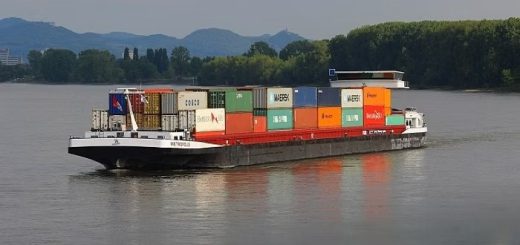How to Find a Shared Truckload, When to Use One?
Do you frequently schedule full truckload shipments that are little less than full?
Or are your less-than-truckload (LTL) shipments taking longer and being less dependable than you would like?
There’s good news: you don’t have to choose between full truckload and less-than-truckload.
You might be an excellent candidate for finding efficiency, economic, and ecological benefits from shipping by shared truckload.
Learn what shared truckload is, how it differs from the kinds of shipping you’re familiar to, and how to take advantage of its advantages.
What Exactly Is a Shared Truckload?
Shared truckload, also known as co-loading or partial truckload, is a way of putting the freight of numerous shippers into a single trailer.
However, the same may be true about LTL.
So, what is the distinction between these kinds of logistical transportation?
What is the difference between Shared Truckload and LTL and Volume LTL?
LTL carriers operate in a totally different manner than truckload carriers. Because of their “hub and spoke” method, goods sent by LTL carrier passes through a succession of terminals where it is unloaded from one vehicle and loaded into another between the time it is picked up and the time it reaches at its destination.
Volume LTL works in the same way as normal LTL; the main difference is the number of pallets a carrier is prepared to take (usually a maximum of 6 for standard LTL and 12 for volume LTL).
All of this operational complexity is avoided with shared truckload. When shipping via shared truckload, your cargo will not stop at any consolidation hubs and will not be transloaded at any point along the way.
It will travel in a pretty straight line, pausing only if another shipper’s goods has to be picked up or dropped off before yours arrives.
What Are the Advantages of a Shared Truckload?
In contrast to LTL (Standard or Volume):
- Improved service
- Reduced goods handling
- There will be no pauses at intermediate terminals.
- Delivery times that are more predictable
- Tracking by freight carrier is more reliable.
- There is no need for a goods class.
- The same as your stated LTL shipment price
In comparison to a Full Truckload
- Price reduction compared to the cost of reserving a full truck
- Contribute to your company’s sustainability KPIs by decreasing greenhouse gas emissions by up to 40%.
Are there any disadvantages?
There is only one, but it is significant: capacity.
While any of the 900,000 for-hire trucking businesses may possibly conduct shared truckload, there aren’t many that are interested in doing so. There are also few 3PLs with the resources to make it happen on a regular basis.

When Is It Appropriate to Use Shared Truckload?
If you have an LTL or volume LTL cargo of 1 to 12 pallets, you should consider shared truckload since you may experience the service and efficiency benefits of truckload shipping (shorter transit time, consistent pick-up/drop-off scheduling, little handling) at an LTL pricing.
If you have an underutilised trailer moving freight with few peculiar handling needs on a high-value lane, you should consider converting it to shared truckload. By sharing the load, you might possibly save money and lessen your carbon footprint.
Starting With a Shared Truckload Provider
Currently, shared truckload relies on a third-party logistics provider (3PL) to match various shippers who are ideal candidates for the method.
These matches rely on algorithms that pair shipments that are excellent candidates for shared truckload transport. It might be several LTL shipments, underutilised truckloads, or a combination of the two.
However, volume isn’t the only element at work. To be a good shared truckload match, shipments must match in the following ways:
Origin: Are the pick-up sites near enough together that they do not add too much time to the driver’s route?
Destination: Are drop-off points close enough?
Transit time: Do you anticipate the same pick-up and drop-off dates and times?
Commodity type: our goods be transported together? This is crucial for shipments of perishable goods, extremely delicate cargo, and temperature-controlled cargo.
Given how difficult it may be to link two shippers with a willing carrier, you must be proactive in looking for chances to ship shared truckload.
Opportunities for shared truckloads might frequently come and go. You need to be prepared to quickly give the go-ahead to book so that your provider can watch out for them with your unique goods in mind.
Visit www.trucksuvidha.com now!!




Recent Comments